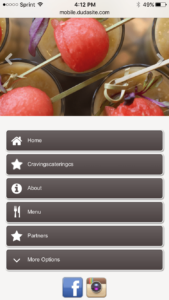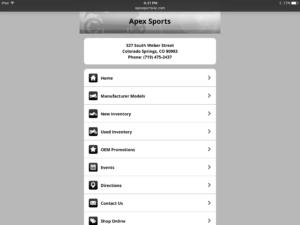How Do I Modernize My Website? Part 3 of 5: Mobile Website Design
This post is third in a series of five about website modernization. You’ll want to check out the first two here:
How Do I Modernize My Website? Part 1 of 5: Website Photos
How Do I Modernize My Website? Part 2 of 5: Basic Website Structure
All of the blogs in this series are important, but adjusting your site to function well on mobile devices is something you should have done yesterday. Don’t waste time thinking about the problem- contact us now to fix it!
The Case for Mobile Website Design
Mobile phone usage is reshaping the way we consume information. Smartphones today are to computers what computers were to books in the mid 90s. There are currently about 3 billion internet users worldwide, and in some countries, a smartphone is the only affordable way to access it. If your website is not mobile friendly, you’re already antiquated and should either give up, or make the shift immediately. Your competition has likely already made the shift to proper mobile website design, and visitors to your site using mobile devices are leaving it in droves.
We hear a lot of business owners say, “We sell only to other companies. We don’t need a better website because people aren’t buying from us based on our website.” That logic is self-defeating, and quite frankly, these business owners must live in a dark cave. A great article written by Lauren Kaye at Brafton Inc. more than two years ago suggests that 84.3% of B2B companies (businesses selling primarily to other businesses) were researching company websites before making a purchase. That was two years ago!
Full Page Websites Aren’t Enough
If you think you don’t need a mobile friendly website, you obviously aren’t measuring your search traffic and- NEWS ALERT! – you can’t improve what you don’t measure.
According to Statista, smartphone market penetration in the US reached 58.9 percent in 2015
Device Atlas suggests that there are over 2.6 billion smartphone users worldwide
The most important stat to consider when making the decision about a mobile version of your website is shared by Greg Sterling (love the last name), contributing Editor at Search Engine Land. According to Mr. Sterling, about 56% of traffic to top US sites is coming from mobile devices. That’s right. More than half of all website searches are performed using mobile devices. If this information alone isn’t enough to change your mind, please go back into your cave.
People expect a great website experience when using large desktop computers, laptops, tablets and smartphones. They’re looking for something that’s properly formatted no matter the device they happen to be using.
There are many ways to build what’s been coined a “mobile friendly” website. The technical details can be daunting, so we will share visual representations. You’ll get the gist.
The five most common problems we see with mobile versions of websites:




